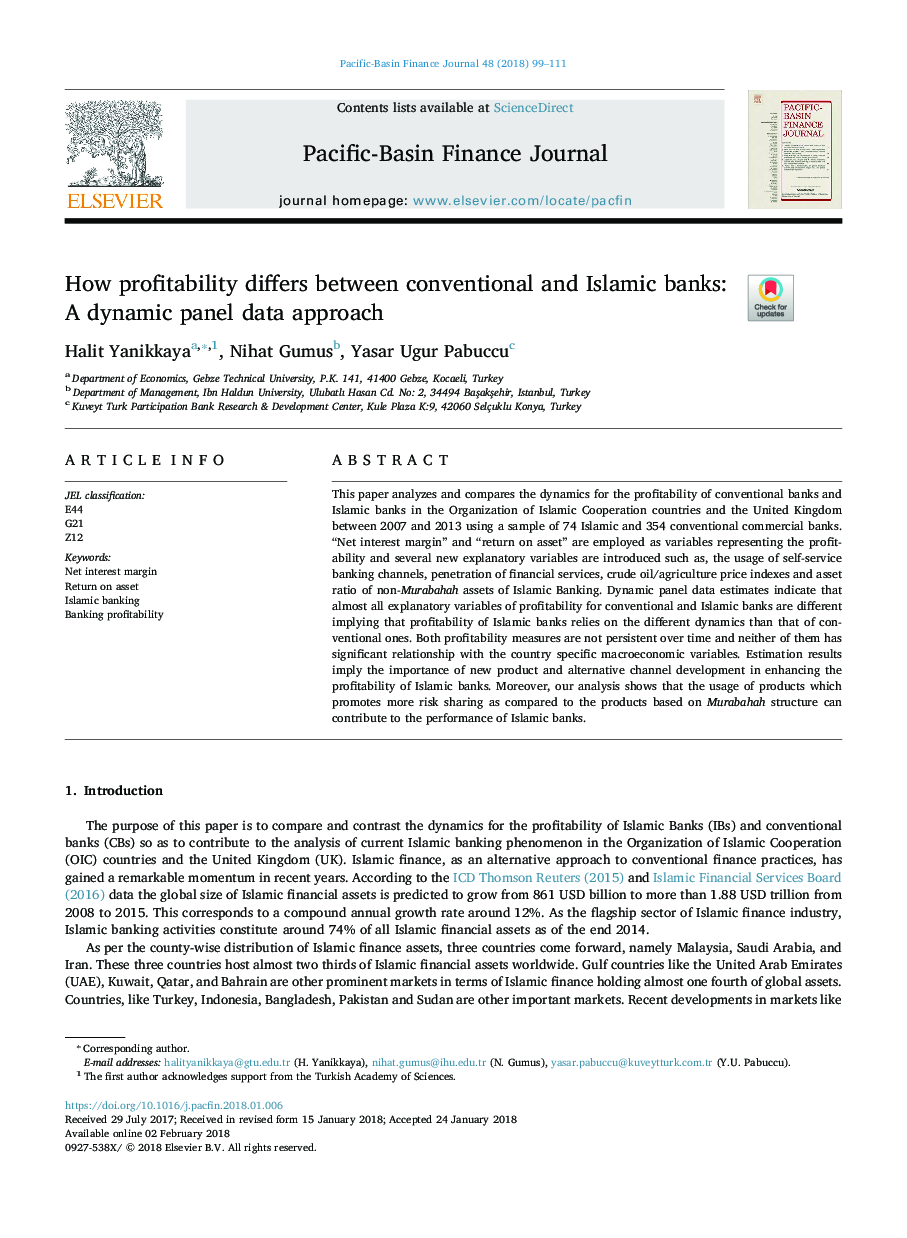| Article ID | Journal | Published Year | Pages | File Type |
|---|---|---|---|---|
| 7374180 | Pacific-Basin Finance Journal | 2018 | 13 Pages |
Abstract
This paper analyzes and compares the dynamics for the profitability of conventional banks and Islamic banks in the Organization of Islamic Cooperation countries and the United Kingdom between 2007 and 2013 using a sample of 74 Islamic and 354 conventional commercial banks. “Net interest margin” and “return on asset” are employed as variables representing the profitability and several new explanatory variables are introduced such as, the usage of self-service banking channels, penetration of financial services, crude oil/agriculture price indexes and asset ratio of non-Murabahah assets of Islamic Banking. Dynamic panel data estimates indicate that almost all explanatory variables of profitability for conventional and Islamic banks are different implying that profitability of Islamic banks relies on the different dynamics than that of conventional ones. Both profitability measures are not persistent over time and neither of them has significant relationship with the country specific macroeconomic variables. Estimation results imply the importance of new product and alternative channel development in enhancing the profitability of Islamic banks. Moreover, our analysis shows that the usage of products which promotes more risk sharing as compared to the products based on Murabahah structure can contribute to the performance of Islamic banks.
Keywords
Related Topics
Social Sciences and Humanities
Economics, Econometrics and Finance
Economics and Econometrics
Authors
Halit Yanikkaya, Nihat Gumus, Yasar Ugur Pabuccu,
